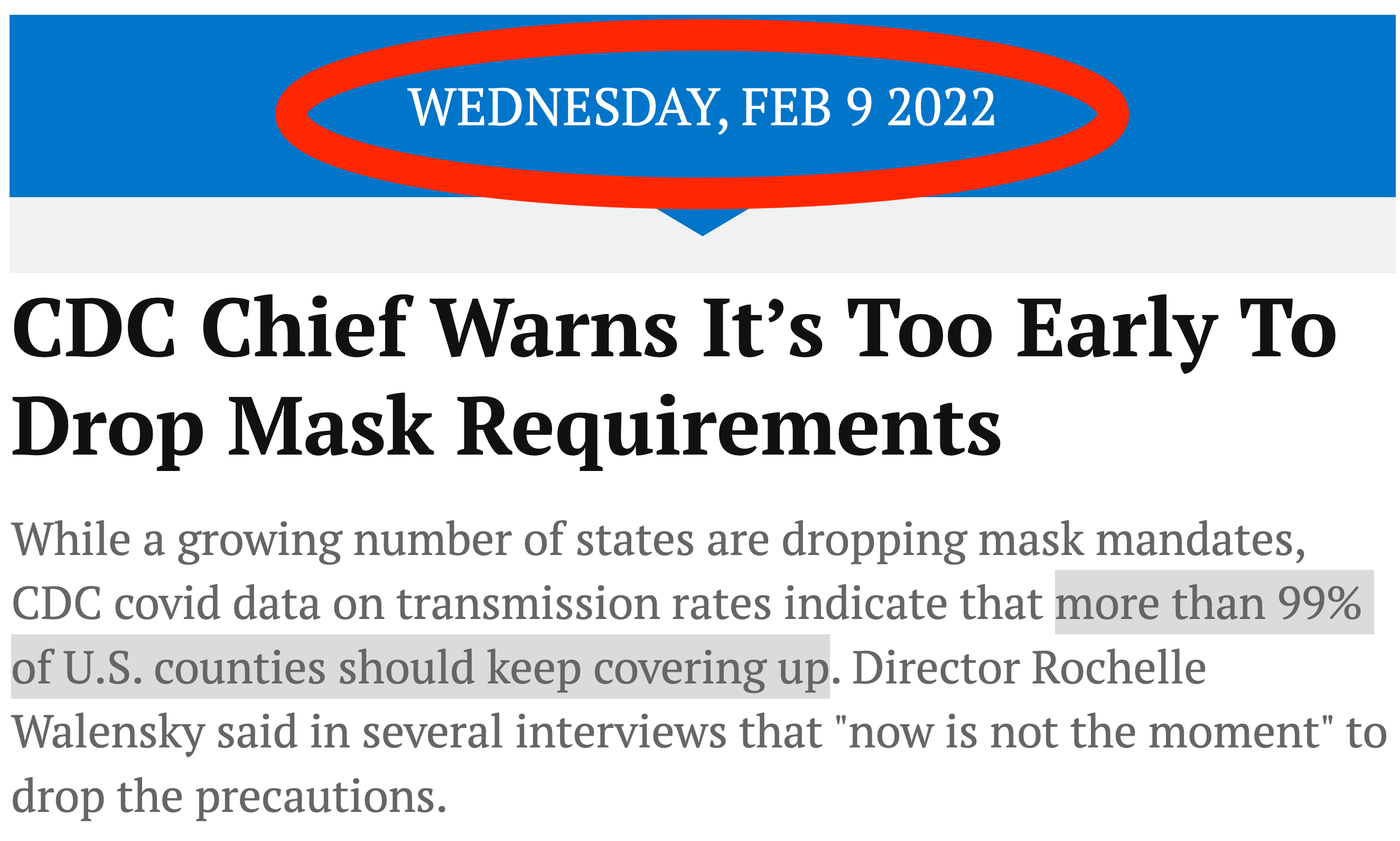The corona what?
Are they talking about the next country Russia is planning to invade?
If so, we have to unite against it.
Omicron is receding in the US and states and cities are lifting remaining restrictions. Public health experts, however, are urging leaders to use the lull to prepare for future outbreaks.
The federal Centers for Disease Control and Prevention (CDC) recently announced new guidelines for judging community risk, shifting focus from cases to hospitalizations.
More than 90% of the US is now at low risk of overwhelming health systems, which means requirements for masks and other precautions can be loosened, the CDC said.
Huh.
Just a strange coincidence, I guess!
Most states and cities had already dropped mask mandates and vaccination requirements or announced plans to end them. Others did so after the change in guidance.
With only 65% of the population fully vaccinated, the US was buffeted by Omicron. It is now seeing an average of 54,000 cases and 1,300 deaths each day.
But cases and hospitalizations are declining very rapidly, which is “reassuring”, said Abraar Karan, an infectious disease physician at Stanford University.
Large swaths of the population have some form of protection from Covid, through vaccination or prior infection or both.
Natural immunity exists?
The Science sure does evolve quickly!
“Even if you pull back on mitigation measures, you may not have a big rise in cases,” Karan said.
But he was also worried that might lull the public and leaders into thinking the pandemic is over.
Officials should use this time to prepare for the next surge and the next variant, which could be more severe or more transmissible, Karan said.
“Once we have another variant, whenever that may be, the amount of spread from that variant will depend on what kind of preparedness we do now. What are we doing to make schools, workplaces and public spaces more safe?”
The US should continue investing in masks, tests, ventilation, vaccination campaigns, wastewater monitoring and other measures to prevent and respond to the next surge, experts said. And when the next wave begins rising, communities should pay careful attention to changing levels of risk.
…not “if”?
“We need to expect the unexpected with Covid-19,” said Jason Salemi, an associate professor of epidemiology at the University of South Florida College of Public Health.
…
“We want to give people a break from things like mask wearing when our levels are low, and then have the ability to reach for them again if things get worse in the future,” the CDC director, Rochelle Walensky, said on a call with reporters.
I guess we just have to sit and wait for orders from The Science.
 Daily Stormer The Most Censored Publication in History
Daily Stormer The Most Censored Publication in History







